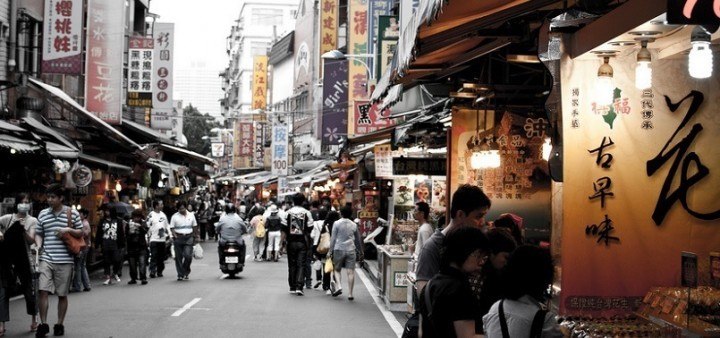After the massive capital injections of 2014, 2015 set the stage for a veritable royal rumble of ecommerce players as they competed for market dominance. So while ecommerce in Southeast Asia remains fragmented and nascent, we can definitely tip our hat to some of the major entrants and highlights.
This was the year we saw Indonesia double down on ecommerce, with national pride MatahariMall claiming to
raise $500 million to take on Lazada’s rocketship and the return of
Magnus Ekbom to the the helm of Lazada Indonesia.
We saw some key players struggle to find their directions. Line, the popular messaging app, went through a year of soul-searching as it launched and then canned several initiatives like Line Flash Sale, Hot Brand, Groceries, and now also Line Hot Deal. Only Line Shop, its mobile C2C marketplace, remains, however, in a shark-infested space that also counts Shopee and Carousell as inhabitants.
Then there’s Paraplou who sadly announced the closure of operations this year and SingPost who went on an international shopping spree but
lost top executives and faced a
delay in closing its Alibaba investment.
At aCommerce, we said goodbye to some of our own top executives in Indonesia as they joined the Indonesia fight in the B2C bloodbath (to be discussed below).
More money flowed into the region with Carousell allegedly
topping up its war chest with $50 million to take the lead in the mobile marketplace race. In the enterprise game, aCommerce took home a
strategic investment from juggernaut distributor DKSH, giving us the fuel to
re-enter Singapore and expand into the rest of Southeast Asia.
From the imminent B2C and C2C bloodbath, to mobile commerce, the Uberization of logistics, and drone deliveries, here is a look back at some of our predictions for ecommerce in Southeast in 2015.
1. The year of M&As: consolidation will rise in the B2C ecommerce space
Last year we said that 2015 would be the year that smaller ecommerce companies ran out of their own steam, i.e. organic growth, and would either have to merge or acquire to keep pace with deep pocketed players. Consolidation did happen this year.
First, Ardent Capital-backed WhatsNew
acquired lifestyle vertical site Moxy in Thailand early in the year to pivot into female-focused ecommerce and expand into Indonesia. And
Lazada swallowed up Lamido in March. In July, Luxola, one of Southeast Asia’s leading beauty e-tailers, got
picked up by LVMH, the Paris-based luxury powerhouse that also owns Sephora.
“If you’re selling other people’s brands, you are competing not via a local group of competitors but with everyone. In this type of market, you might imagine having one large national winner.
You might imagine that winner is ruthless about scale and cost, and is run by a visionary leader who with an extreme long-term focus. Such a company might not make real money for a long time — but when it does — it will be incredibly powerful.” – Andy Dunn, founder & chairman, Bonobos.com
In his seminal essay “
Ecommerce is a Bear”, Andy Dunn, founder and chairman of Bonobos.com, elaborates why B2C ecommerce is a winner takes all game. Just look at the US. where Amazon dominates or China where in a span of less than 10 years the game has boiled down to two key players – Tmall and JD.com.
Unfortunately, there have been casualties as well of the hyper-competition in B2C ecommerce in Southeast Asia. As mentioned above, fashion retailer Paraplou Group
shut down in October after two years and having raised $1.5m USD. To succeed in B2C, it requires a laser-focus and deep pockets, both of which Paraplou
lacked.
Accuracy rating: A
2. Digital agencies will adapt or go extinct
In the end, the traditional digital agencies’ scope is reduced to executing global contracts and buying offline media (in the US, these agencies still have a role to play due to a more complicated ad tech environment and media mix). These agencies won’t admit it but the ground has been shifting.
Disappointed with their global agencies, Fortune 500 brands have been increasingly reaching out to performance-focused partners like SP Ecommerce and aCommerce to help them with driving real orders and revenues instead of banner ad impressions and incremental Facebook Likes. Having an end-to-end view enables dedicated ecommerce partners to optimize brands’ performance across the entire ecommerce value chain, from banner ad click all the way to last-mile delivery and customer service. Agencies are at a disadvantage here due to the lack of visibility beyond impression and clickstream data.
Having said that, agencies are not that stupid and see the rise and importance of ecommerce in Southeast Asia. However, observing something and acting upon it are two different things. GroupM is rumored to have started looking into building an ecommerce marketplace and team in our region but changing a 30 year-old DNA to cope with ecommerce, physical operations (aka the hard shit), and modern marketing is like trying to 180 the Titanic. WPP, Publicis, and Dentsu/Aegis missed the boat on ecommerce in China long time ago – e.g. Publicis very recently
acqui-hired BysoftChina, a Shanghai-based ecommerce agency, a sad 10 years after the start of the ecommerce boom in China.
Accuracy rating: A+ (granted, this one wasn’t that hard)
3. The marketplace space will get overcrowded
We predicted the competition in the marketplace space to heat up and boy did it heat up. Forget China, the next
ecommerce gold rush is in Southeast Asia.
However, unlike China, there’s no Great (Fire)wall to keep the barbarians out. As a result, we are seeing JD (China), Shopee/Garena (Singapore), Carousell (Singapore), AliExpress (China), PCHome (Taiwan), and Line Shop (Korea) among many others flocking to one of the last untapped frontiers of ecommerce marketplace gold in the world. Note that this is in addition to local incumbents like Lazada, Tokopedia, Tarad, and WeLoveShopping.
However, unlike in the B2C space, we will not see consolidation for the foreseeable future. This is because unlike in China, where Taobao dominates with over 90% of the C2C market, marketplaces in Southeast Asia will each try carve out a niche. Taobao (through Alibaba) was able to dominate the market by riding off the last two decades’ manufacturing and export boom in China. SEA is not a manufacturing powerhouse like China.
We’ll expect Line and Shopee to battle it out for mobile marketplace domination. Line has called in reinforcements by poaching
Ariya Banomyong, the former Google Thailand Country Head, to lead Line’s second biggest market outside of Japan and to drive ecommerce and local product innovation.
And then there’s Carousell who’s recently
rumored trying to raise a fresh $50 million Series B to expand across Asia. Others like Lazada, MatahariMall, and WeMall (True Corp’s rumored upcoming ecommerce venture) it will try to replicate the Tmall model. Old schoolers like Tarad and Kaidee will try to maintain their grip on the lower-end of the market.
Accuracy rating: A+
4. Cross-border ecommerce will accelerate with AEC
Cross-border ecommerce unfortunately didn’t take off in 2015. The ASEAN Economic Community (AEC) was supposed to launch by end of this year but by now we all know that it will take much longer since governments don’t operate at startup speed.
Even then, there are so many growth opportunities within domestic markets that it just doesn’t make sense to focus on cross-border growth within ASEAN, as evidenced by the recent focus on Indonesia’s ecommerce opportunity.
However, cross-border from a B2B and supply chain perspective did take off in 2015. Arvato’s
Mitch Bittermann joined aCommerce as Group Chief Logistics Officer to focus on driving B2B logistics, much of which is engineering the supply chain from China into Southeast Asia and vice versa.
China’s second biggest B2C ecommerce player JD.com just entered Indonesia by launching JD.id. This will bring their infamous and massive China supply chain network into Southeast Asia, laying the foundation for “Silk Road 2.0” and expanding China’s soft power and hegemony through commerce and digital.
Rocket Internet’s Lazada Group, one of the largest ecommerce marketplaces in Southeast Asia, established its cross-border headquarters and global sourcing operations in Hong Kong – the goal being to offer brands and merchants in China and HK with a single entry gateway into Southeast Asia.
“We see tremendous potential in Southeast Asia as consumers continue to embrace online shopping largely facilitated by the rise of internet and increasing mobile penetration.
As the leading ecommerce player, we offer brands and merchants in Hong Kong and China with the only single retail gateway to enter Southeast Asia,” –
Aimone Ripa di Meana, CEO Crossborder, Lazada Hong Kong
Accuracy rating: D

Photo credit: Loic Lagarde
5. Demographic evolution: foreign entrepreneurs will flood the market
Over the past year, we’ve noticed two patterns of talent flow into Southeast Asia. The first one is the one we predicted – a pull of talent into the region attracted by the booming ecommerce and tech market in SEA.
This trend is driven by the slow economic recovery in Europe and US. We’re seeing applications from outside the region continuously on the rise, even from hotspots such as Silicon Valley.
The second pattern of talent flow is a push one, driven by new companies entering Southeast Asia. With the increased focus on SEA as the
next big thing in ecommerce, more and more companies are flocking to the region.
China’s JD just launched JD.id in Indonesia and
Garena is making big bets on Shopee, their new mobile marketplace.
HappyFresh, a
online grocery delivery service, recently launched in Indonesia and Thailand and has their regional marketing team based in Jakarta now. Singapore’s Carousell is rumored to be
raising $50 million to expand across Asia.
With these companies coming into SEA, there has been an additional influx of talent into the region, originating from China, Singapore, and Europe as most of these firms are bringing their mid- and senior-level management along.
Accuracy rating: B+
6. The Uber-ization of logistics and everything else
GrabTaxi moved into logistics in 2015. The Malaysia-based company started
experimentingwith next-day delivery services in March, called GrabDelivery. The service, now called
GrabExpress, is available in major Southeast Asian markets like Indonesia and Thailand.
“CEO Anthony Tan told TechCrunch that the firm would experiment with new services in the wake of SoftBank’s $250 million investment in it last December, and this is one of the first ideas to be floated.” –
TechCrunch
Uber on the other hand has yet to expand their ‘UberRush’ service into Southeast Asia, or any countries outside of the US.
The biggest surprise here is probably
GoJek from Indonesia. The company rose from “zombie”-mode to become the biggest threat to GrabTaxi and Uber in Indonesia in a matter of a few months. As of today, GoJek offers courier/delivery services (GO-SEND), guaranteeing 60 minute delivery anywhere in the city, in addition to a plethora of other services such as food delivery (GO-FOOD) and groceries (GO-MART).
Outside of pure logistics, there are companies like HappyFresh and
YesBoss that are trying to “Uberize” grocery deliveries and pretty much everything else, respectively.
Accuracy rating: A+
7. Mobile commerce still crippled by poor UX
Based on our aggregated data, mobile generated 51% of visits and 22% of transactions in 2015. This number is up from 18% and 12% in 2014.
However, with conversion rates on mobile 3-4x lower than desktop, mobile commerce hasn’t truly reached its tipping point yet in Southeast Asia despite the region being
identified as the perfect storm for mobile commerce.
This isn’t a demand side issue but rather a supply side issue.
SaleStock, a fast-growing fast-fashion ecommerce site in Indonesia, is foregoing desktop completely and only providing a mobile, albeit non-native, shopping user interface. This showed us that from a user/demand side perspective, mobile commerce works really well in Southeast Asia.
However, for each SaleStock there are many other companies that have gone desktop first potentially due to many factors such as 1) a desktop site being easier to build due to many templates out there, 2) a legacy brand/corporate site inherited and forced to turn into ecommerce, 3) the digital/ecommerce person in charge having grown up in the desktop era and thus having a “desktop-first” mindset, and 4) brands and retailers “dipping their toes” into ecommerce and therefore starting with something “safe”.
We have seen positive trends in 2015 though. For example, Lazada now gets more than 50 percent of their traffic from mobile channels after making app development a priority. They’re also one of the first e-commerce players in Southeast Asia that launched both their iOS and Android apps.
MatahariMall started with their mobile website and worked backward to create their desktop experience. Today, over 30% of MatahariMall’s transactions are generated through mobile and, having recently launched its
native app, this percentage is expected to increase even further.
Even Google is realizing that a poor mobile experience is hurting its business, with companies less likely to advertise on mobile due to lower conversion rates. In April, Google launched a
new update to its search algorithm called “Mobilegeddon” which favors sites that are mobile-friendly and penalizes those that aren’t.
Accuracy rating: B+
8. B2B ecommerce will be the new black
Since then, the company has seen 50% month-on-month growth, confirming that while B2B isn’t sexy, it’s a lucrative business where margins aren’t shaved away through hyper-competition like in B2C.
“The best thing about B2B is that the customer is at your doorstep and they know what they want. B2C trends shift as consumers change their habits (tech, fashion trends, disposable income level etc), whereas B2B is predictable and is less affected by seasonal or macro trends.
Businesses need supplies and merchandising every month, or else they cannot run their business. We have seen nearly a 50% return rate and an average monthly spending per customer of around $1,400.” – Peter Goldsworthy, CEO and Founder, Bizzy.co.id
Lippo Group-backed
Venturra Capital, which recently raised a $150m fund for tech investments across Southeast Asia,
considers B2B as one of the three big buckets to focus on, with the other two being consumer tech (think MatahariMall) and Internet of Things. Lippo’s B2B project is still in stealth but the company has been actively hiring staff and will soon launch under MatahariBIZ.com.
While Southeast Asia is still far away from the B2B numbers that China is showing – B2B accounts for over 75% of total ecommerce Gross Merchandise Value (GMV) in China – we’re off to a good start with key players like Ardent Capital and Venturra Capital focusing on this lucrative but much underrated opportunity.
Accuracy rating: B
9. Cash on delivery will remain necessary to win SEA
Based on aCommerce’s latest aggregated numbers, cash on delivery (COD) made up 74% of transactions in Southeast Asia, up from 53% the year prior.
If you look at China, COD was 70% of B2C transactions in 2008. However, by 2014, Alipay had surpassed COD as the dominant payment method, with over 85% of 11/11 shoppers expressing a preference towards using Alipay vs. only 21% for COD.
Whatever happened in China won’t happen in Southeast Asia though, at least not in the foreseeable future. Alipay became popular the same way PayPal became popular in the US – both payment products had a massive distribution channel, being eBay for PayPal and Taobao for Alipay.
Southeast Asia faced two challenges that will pretty much cement the dominance of COD for at least the next several years – 1) fragmented marketplace ecosystem and 2) lack of a single big market like China or US.
These factors make it hard for any single online payment platform to reach critical mass required for a standard to be established. There’s 2C2P,
Omise, AirPay, and Line Pay among many others but none of them truly dominates like Alipay does in China or PayPal in the US.
Accuracy rating: A+
10. Drone deliveries will definitely happen (not)
Okay, drone deliveries did happen but not on a commercial scale. After Amazon’s initial
publicity stunt pilot, many others followed.
Alibaba tested delivering tea via drones earlier this year.
SingPost successfully ran a drone delivery test in October.
Google is predicting to pull off drone deliveries on a commercial scale by 2017.
Even though drone deliveries didn’t go commercial in 2015, we believe companies like SingPost, DHL, and Alibaba are building the foundation for what will be the future of parcel delivery in Southeast Asia.
With the infrastructure and physical (i.e. islands)
challenges across Southeast Asia, drone deliveries will be the future of logistics in our region. We even think adoption and commercialization of drone deliveries will be faster in Asia due to a much more relaxed regulatory environment compared to US and Western Europe.
Southeast Asia being strategically located next to China, the
epicenter of drone design and manufacturing, will only help accelerate this trend.
Accuracy rating: B
That’s enough from us. What were your major expectations for ecommerce in Southeast Asia in 2015? How many of these became reality? Any surprises or disappointments?







